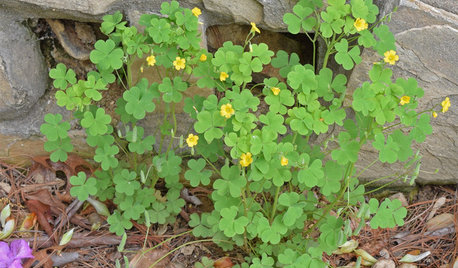Cyperus esculentus
Josh
19 years ago
Related Stories

GARDENING GUIDESWhat Your Weeds May Be Trying to Tell You
An invasion of weeds can reveal something about your soil. Here’s what is going on and what to do about it
Full StoryMore Discussions
Ran across a statement in a magazine: "Yellow Nutsedge hosts a soil-dwelling bacteria that can destroy soil-borne nitrogen". Article unsigned and no references cited. I'm supposing that the purpose would be to limit or prevent other plants from growing nearby, and that perhaps the Nutsedge can exist on less nitrogen than most plants.
I have a patch of this Nutsedge in my garden growing among other weeds. Perhaps it is like Moss which will slowly colonize a piece of ground as the soil becomes too sterile for other plants? Would appreciate any comments or references to sites which might give me more info. Just find this so curious... josh


kdjoergensen
JoshOriginal Author
Related Professionals
South Orange Landscape Architects & Landscape Designers · Elgin Landscape Contractors · Canby Landscape Contractors · Coeur d'Alene Landscape Contractors · Goodlettsville Landscape Contractors · Lorain Landscape Contractors · Mason Landscape Contractors · Mastic Beach Landscape Contractors · Point Pleasant Landscape Contractors · Setauket-East Setauket Landscape Contractors · St. Louis Landscape Contractors · San Pablo Landscape Contractors · Alsip Fence Contractors · Kansas City Fence Contractors · Spring Fence Contractorsnazanine
JoshOriginal Author
KarenMN
JoshOriginal Author
KarenMN
JoshOriginal Author
JoshOriginal Author
CoolPlants
JoshOriginal Author
mimulus
JoshOriginal Author
cyrav
JoshOriginal Author
slim_nonso_yahoo_co_uk
pickwick